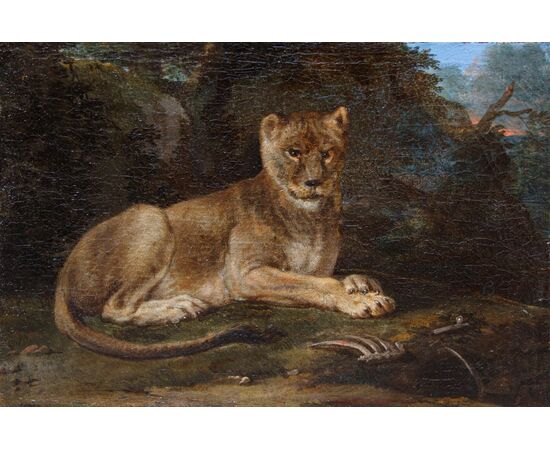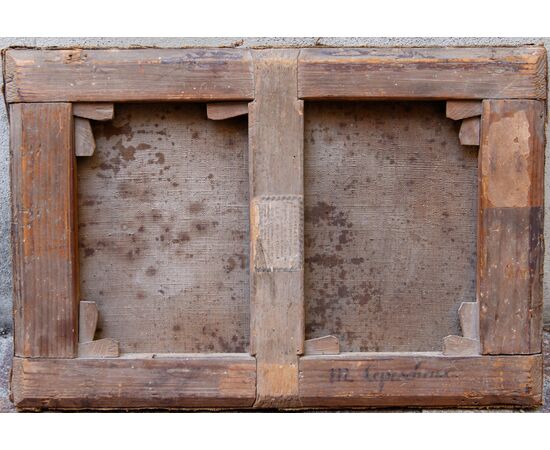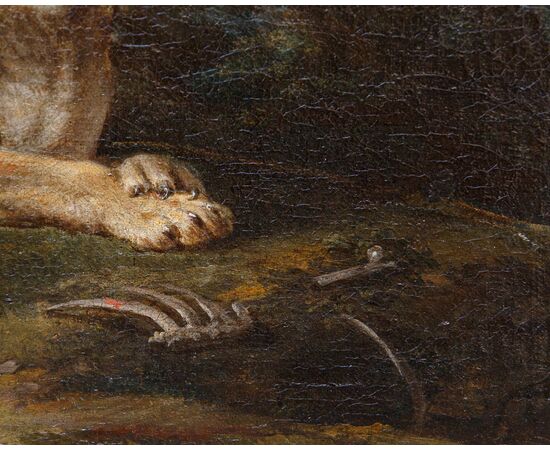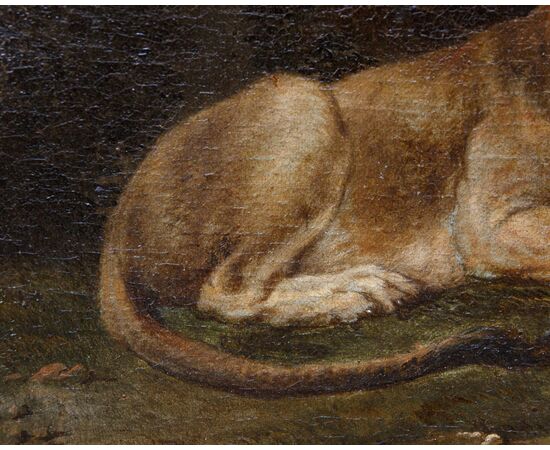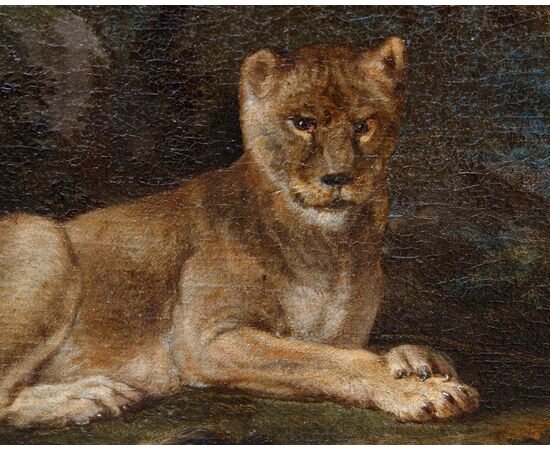French School, 18th century, Young lion
French School, 18th century
Young lion
Oil on canvas, 28 x 42 cm
Bearing inscription on the back of the frame "M Lepescheux" and the label of the dealer A LA PALETTE D'OR
The work we can observe here falls within the genre of animal painting, which already from the 17th century carved out its own role within the European artistic scene; in this period, in fact, many Nordic artists, especially Flemish artists, specialized in the representation of animals, often inserting them in paintings that responded to different genres, such as still life or live nature, but which also included animal figures made with extreme detail in their subjects. The attention to the real data, the study of anatomical details, the early interest in animal and plant biology, expressed through studies and drawings of animals and plants to be included in scientific books and manuals, and the taste of the patrons for these works allowed this pictorial genre to proliferate, which often saw specialized artists collaborate with colleagues accustomed to painting other subjects, creating details of animals or still lifes in the paintings of other painters: an example above all is represented by the partnership between Frans Snyders, one of the first Flemish animal painters, and Peter Paul Rubens. The Flemish tradition also had a substantial impact in neighboring France, whose painters during the seventeenth and eighteenth centuries, studied the models of the Flemish and frequented their workshops as direct students: among these we can mention Alexandre-François Desportes (1661-1743), Jean-Baptiste Huet (1745-1811) and Jean-Baptiste Oudry (1686-1755). The French tradition for these subjects is configured within animalier painting, which experiences a period of particular fortune thanks to several factors such as the growing attention of artists to the representation of nature, as well as the birth, between the eighteenth and nineteenth centuries, of biology and zoology as scientific disciplines that make the genre undergo a process of rapid evolution; furthermore, it is necessary to remember how the colonial expansion of the French state led to the discovery of new animal species, which became subjects of great fascination for artists. This last point allows us to consider with greater specificity the lion that is represented here lying in the middle of a dense thicket from which we can only glimpse a small corner of the horizon. Despite the relaxed pose, the gaze is intense and wary, as if the feline were ready to react promptly towards the viewer, who can illusorily come into contact with the animal given the close-up shot and the placement in the foreground. The painting is set in the 18th century, a period in which other French artists decided to depict exotic animals within their works, including, in fact, lions, a symbol of strength and majesty. The feline exhibited here is also a forerunner of the future lions created by great French masters of the nineteenth century such as Théodore Géricault, Eugène Delacroix and Antoine-Louis Barye, also known for his sculptures as well as for his animalier paintings. The inscriptions with the name of "M Lepescheux" and the label of the art dealer "Palette d'or" confirm the French origin of the painting.

